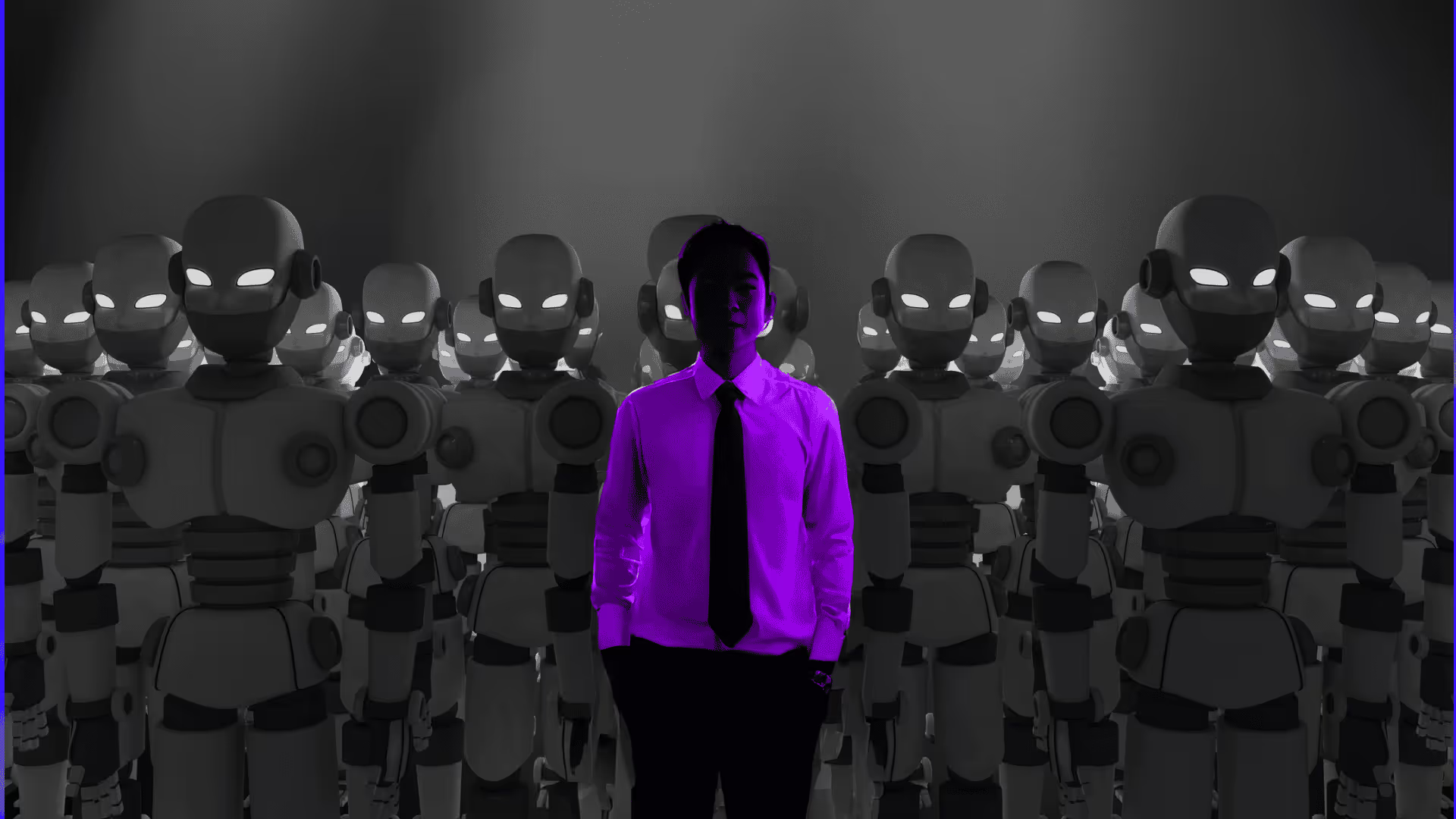Amit Rawal leads AI transformation full-time at Google, but in his spare time he’s been building a side hustle: his own AI education platform, Supercharged Life.
With limited time and resources and only a two-person team at his disposal, he needed significant help to get it off the ground. So he employed an AI team that handles nearly every part of the business – from content production and marketing to analytics and sales enablement.
Here’s how he hired the right tools for the job, how he budgets for their payroll, and how it’s going.
Hiring an AI team
At any given time, Amit uses 6-7 “core team” tools daily, while trialing 5-8 others on rotation. And he is constantly hiring.
“For content creation, there was a point where I was using Descript, ElevenLabs, Synthesia, and HeyGen at the same time,” he says. “The problem is that one tool does one thing exceptionally well, the other one does another. So over time we converge to using two of the four.”
His process for building his AI team resembles a traditional recruitment style:
- Recruit – He is constantly searching for new tools as they hit the market, even if he already has one for that “job”.
- Trial – He runs a test period of several tools against the same workflow to measure performance.
- Hire – The tools that perform the workflow best get “promoted” into the core team. The ones that don’t get “offboarded”.
- Train – He conducts a typical onboarding, the way he would with an intern, to train the AI tool on important context.
“If I was using something three months ago, I’ve probably moved on to something new. If there’s something better, I’ll switch, because there’s tools coming out every day.”
Building an AI team structure
Amit structures his team around two philosophies:
- AI tools can do a significant amount of the work, with human managers focusing their efforts on robust training and reviewing/approving outputs
- Most people can get a lot done with a single LLM tool if they train it well with significant data, but will have to graduate to specialized tools for specific forms of content creation and niche tasks
Amit’s core AI team currently consists of:
The creative department
These tools handle the bulk of course creation and social media promotion.
- Canva AI – Generating promotional graphics
- Custom GPTs & Gemini Gems – Scripting course content
- Nana Banana – Editing course videos
- Midjourney – Creating consistent brand images
The marketing & sales department
These tools draft all marketing materials and serve as the sales development arm.
- Jasper – Drafting marketing copy
- n8n agents – Analysis of who’s buying and what kind of leads are coming in, and automating outreach.
The operations department
This is a collaboration of tools that serves as the project management arm of the team.
- Read.ai – Sits in on meetings, consolidates notes, and parses action items
- Slack bots – Takes Read.ai’s meeting transcripts to assign tasks to the relevant team members and send automated reminders
The executive team
Think of this as an AI-powered EA and customer support team wrapped in one.
- Shortwave – Uses Amit’s email history & context awareness to draft automated responses to incoming emails
- DecisionOS – Uses top mental models to serve as a strategic advisor on big decisions
Right now, 50% of these departments are interconnected through API integrations. But the plumbing isn’t there yet to integrate all of these tools together for a fully automated system.
And these AI teammates are not autonomous. Amit’s 2 human employees review, refine, and approve all AI-drafted content before it goes out.
“I think these are the only two skills that will be relevant for humans in the future of work – taste and judgment.”
The AI payroll (and ROI)
Amit explicitly tracks tool costs as an AI payroll, treating each tool as a paid team member.
He budgets $200 - $350 per month for his AI tools – excluding his $200 ChatGPT Pro subscription, and including the rolling cost of constant recruitment.
He equates his AI staff to $2,000 worth of human labor, representing roughly a 5x ROI.
He further estimates that, with just three people (including himself), his human team performs the work of 6-8 full-time employees.
“If it took me 100 hours to build something before, now I can do it in 20.”
Tips for building an AI team
So can you build a team of just AI tools? Almost. There are plenty of AI tools that can approximate entire roles as you’re getting started – but you need people to validate and guide the AI tools on your brand and priorities.
“We tried automated content generation and posting on social media, and it was really crap,” Amit said. “We needed a human in the loop.”
A few words to the wise from Amit:
1. Commit to quality onboarding. Treat AI tools like bright new interns: Very smart but inexperienced. This requires you to put in a (sometimes heavy) upfront investment of time and feedback to train them on your context and style. Once trained, they can give you exceptional work with a two line prompt. But without it, you won’t get the same time savings as Amit.
“Most people think AI is some magic tool that’s going to do everything amazing out of the box. Take the time to coach them, guide them, exactly how you would treat a human.”
2. Know your privacy limits. Amit was very clear: The more value you want from AI, the more data you’ll need to share to train it. This is a tradeoff and there isn’t really a way around it. So before investing in this type of team, determine how comfortable you are with that.
“If you’re worried about your privacy, security, safety, you’re exposing a lot to these tools. The more value you want, the less privacy you’re going to have.”
3. Know your differentiators and keep them human-led. For Amit’s side hustle, teaching is his domain. But all the tasks surrounding it – constant research, drafting, answering student outreach – can be primarily handled by AI.
“I’m always thinking, how do I build my team as an extension of whatever I’m doing?”
4. For lower-tier tasks, start with the problem, then the tool. Amit shared his 2x2 framework for tackling how to handle a problem, plotted by how frequently the task needs to be done and how much judgement is involved:
- High frequency, high judgment → AI-led with human validation.
- High frequency, low judgment → Automate completely.
- Low frequency, high judgment → Keep human-led, with AI as an advisor.
- Low frequency, low judgment → Eliminate, you shouldn’t be doing this at all.










